
Homi
MemberForum Replies Created
-
::
Speed of first train=60km/h
Speed of second train=80km/h
Total distance between both the station=300km
Now using the concept of relative speed=(Speed of first train+ Speed of second train) =60+80
=140km/h
( here since both the trains are moving in the opposite direction so relative speed is calculated by taking the sum of both the speeds)
Time=Distance/Speed
=300/140
=2.143hr or 2hr 8 mins
-
This reply was modified 11 months, 2 weeks ago by
Homi Koylada.
-
This reply was modified 11 months, 2 weeks ago by
-
::
Photosynthesis is the process by which plants use sunlight, water, and carbon dioxide to create oxygen and energy in the form of sugar called glucose (C6H12O6).<div>
During photosynthesis, plants take in carbon dioxide (CO2) and water (H2O) from the air and soil. Within the plant cell, the water is oxidized, meaning it loses electrons, while the carbon dioxide is reduced, meaning it gains electrons. This transforms the water into oxygen and the carbon dioxide into glucose. The plant then releases the oxygen back into the air, and stores energy, and this energy is stored as glucose.
To make glucose, sunlight is captured in pigments like chlorophyll, the substance that gives leaves their green color.
This glucose acts as a source of energy for the plants.
</div>
-
::
Subject-verb agreement is the grammatical rule that the subject and verb in a sentence should use the same number, person, and gender. With the exception of the verb be, in English subject-verb agreement is about matching the number.
Rules of subject-verb agreement with some examples are:
RULE 1: When two subjects are joined by ‘and’, the verb is plural.
For example: My friend and his mother are in town.
RULE 2: When two singular nouns joined by ‘and’ refer to the same person or thing, the verb is singular.
For example: The captain and coach of the team has been sacked.In case these were two different individuals, two articles need to be used: The captain and the coach of the team have been sacked.
RULE 3: Indefinite pronouns (everyone, each one, someone, somebody, no one, nobody, anyone, anybody etc.) are always singular.
For example: Everyone is selfish.
We do not use ‘are’ in this sentence.
This rule does not apply to: few, many, several, both, all, some.
RULE 4: When the percentage or a part of something is mentioned with plural meaning the plural verb is used.
For example: 40 of every 100 children are malnourished.
RULE 5: When the subjects joined by ‘either or’ or ‘neither nor’ are of different persons, the verb will agree in person and number with the noun nearest to it.
For example: Neither you nor your dogs know how to behave.
Either of the books is fine for MAT preparation.
Always remember that, when either and neither are used as pronouns, they are treated as singular and always take the singular verb.
RULE 6: If connectives/appositives like along with, together with, as well as, accompanied by etc. are used to combine two subjects, the verb agrees with the subject mentioned first.
For example: Mr. Ram, accompanied by his wife Sita and his brother, was banished to the forest.
RULE 7: A number of/ the number or
‘A number of (some countable noun)’ is always plural. ‘The number of (some countable noun)’ is always singular.
For example: A number of students are going on the trip.
RULE 8: The singular verb form is usually used for units of measurement or time.
For example: Five gallons of oil was required to get the engine running.
RULE 9: When any of ‘few, many, several, both, all, some’ is used with a countable noun, the verb is plural.
For example: Some men are needed for the battle.
RULE 10: When any of ‘few, many, several, both, all, some’ is used with an uncountable noun, the verb is singular.
For example: Some milk is spoilt.
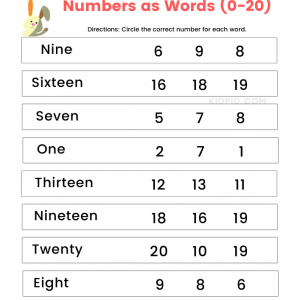 Naming Numbers Worksheets for Grade 1
Naming Numbers Worksheets for Grade 1 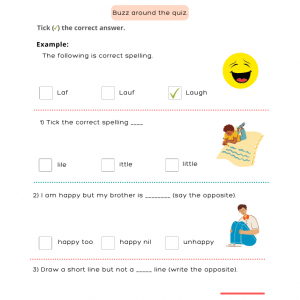 English Grammar Quiz Worksheets for Grade 1
English Grammar Quiz Worksheets for Grade 1 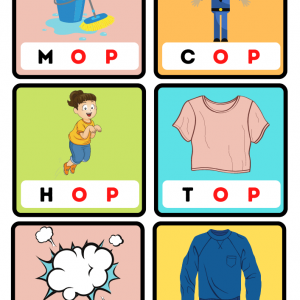 “op” Word Family Flashcards
“op” Word Family Flashcards 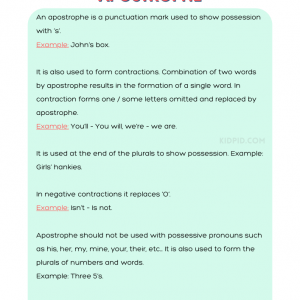 Apostrophes Printable Worksheets for Grade 2
Apostrophes Printable Worksheets for Grade 2 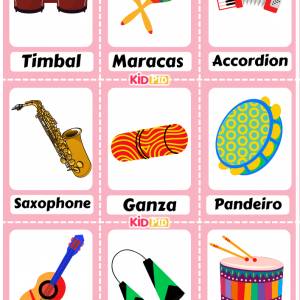 Cultural Musical Instruments
Cultural Musical Instruments 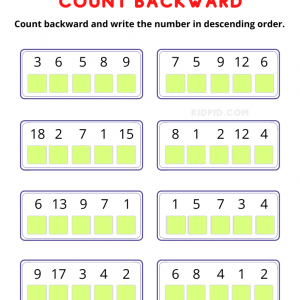 Count Backward and Write the Number Worksheets for Kindergarten
Count Backward and Write the Number Worksheets for Kindergarten